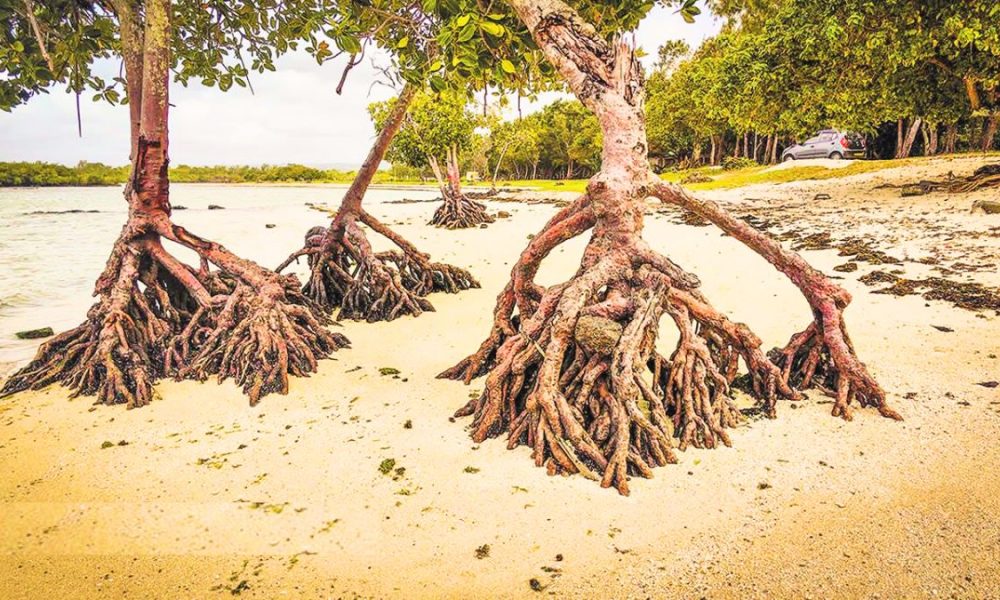International cooperation and funding: opportunities and challenges
Mauritius has benefited from international support, including funding from the European Union, UNDP, GEF, and JICA. These investments target resilience building and biodiversity conservation along coastal zones. Nevertheless, challenges persist in ensuring sustainable implementation, local stakeholder engagement, and long-term maintenance of funded projects to deliver measurable benefits.
Moving forward: the urgent need for a strategic coastal protection framework in Mauritius
The coastal erosion Mauritius situation demands a paradigm shift—from fragmented projects and reports to a holistic, strategic approach grounded in coordination, robust monitoring, and community involvement. Effective coastal protection requires political will, sufficient funding, scientific guidance, and stakeholder collaboration to safeguard the island’s shores for future generations.
Introduction: Coastal erosion Mauritius – a growing crisis
Coastal erosion Mauritius is becoming an increasingly severe environmental crisis, threatening the island’s delicate ecosystems and vital economic sectors such as tourism and fisheries. Over recent decades, the shoreline has been steadily retreating, with visible impacts on both natural habitats and human communities. Despite significant funding and numerous studies dedicated to this problem, the rate of coastal loss has accelerated rather than slowed, raising concerns about the effectiveness of current approaches.
This introduction highlights why it is critical to adopt comprehensive and sustainable strategies that combine scientific understanding with community engagement and political commitment to protect Mauritius’ coastlines for future generations. Coastal erosion not only impacts biodiversity and natural beauty but also undermines local livelihoods, property values, and the resilience of the island to climate change-related hazards.
Effective coastal protection requires integrated management frameworks that consider natural dynamics such as wave energy, sediment transport, and sea-level rise. Equally important is addressing anthropogenic factors, including unplanned urban expansion and infrastructure development close to vulnerable shorelines. This article provides an in-depth overview of the status of coastal erosion Mauritius, the key drivers behind it, the successes and failures of past initiatives, and the urgent need for coordinated and science-based action.
Coastal erosion Mauritius: historical context and key drivers
The issue of coastal erosion Mauritius is not new; it has been observed and studied for decades. Initially considered a natural process, coastal erosion gained prominence in the 1990s when the island’s economy underwent rapid transformation, particularly with the boom of the tourism industry. This development increased land use pressures along the coast and led to the construction of resorts, hotels, and infrastructure in sensitive areas. These human interventions disrupted the natural balance, accelerating shoreline degradation.
Natural drivers of coastal erosion Mauritius include the constant action of waves, tides, and ocean currents, which shape the island’s beaches and rocky shores. However, the intensification of climate change has amplified these natural processes by causing sea levels to rise and increasing the frequency and severity of storms. These changes pose new challenges for coastal management, requiring adaptive strategies that are responsive to evolving environmental conditions.
Additionally, poorly managed coastal development exacerbates erosion by altering sediment flows and removing protective vegetation. Coastal erosion Mauritius today results from this complex interplay between natural forces and human activities. Understanding the historical context is vital to appreciate the roots of the problem and to design interventions that are both effective and sustainable.
Current status of coastal erosion Mauritius and its impact
Mauritius faces alarming rates of coastal erosion, with over 37 kilometers of its coastline affected. Some beach areas have reportedly lost up to 75% of their original width, directly threatening ecosystems and economic activities dependent on coastal tourism. The degradation has severe consequences for biodiversity, including the loss of habitats for marine and bird species, and increased vulnerability to flooding and storm surges.
Sea level rise further complicates this issue. Between 2009 and 2018, Mauritius recorded an average increase of 6.8 mm per year, nearly double the global average. This trend heightens the risk of saltwater intrusion into freshwater aquifers and damages coastal infrastructure. The combination of natural erosion and anthropogenic pressures creates a complex challenge for policymakers and stakeholders aiming to safeguard the island’s shores.
The socioeconomic impacts of coastal erosion Mauritius include threats to property, tourism revenues, and community well-being. With beaches shrinking and coastlines retreating, local economies that rely heavily on beach-related tourism face uncertainty. Furthermore, the displacement of communities and damage to cultural sites risk social instability.
Fragmented initiatives and limited progress in combating coastal erosion Mauritius
Over the years, numerous government-led programs and international projects aimed at tackling coastal erosion Mauritius have been launched. Despite the financial resources and expertise invested, the results have often been disappointing. Many of these initiatives suffered from lack of coordination, poor monitoring, and inconsistent follow-up, leaving interventions fragmented and ineffective.
For example, the Regional Coastal Management Project (ReCoMaP), funded by the European Union, provided substantial investment and launched several local projects. However, tangible long-term impacts remain unclear. Similarly, the UNDP Climate Change Adaptation Programme worked on enhancing community resilience but delivered mixed outcomes with some vulnerable areas still at high risk.
Such fragmented efforts contribute to stakeholder fatigue and undermine public trust. Without a cohesive strategy that aligns local, national, and international actors towards common goals, coastal erosion Mauritius will continue to worsen. The need for integrated governance and accountability mechanisms is paramount.
The role of science and research in addressing coastal erosion Mauritius
Scientific research underpins effective coastal management. Mauritius has benefited from various studies providing critical insights into coastal dynamics and erosion patterns. Projects like the Beach Erosion and Lagoon Dynamics Project have enhanced understanding of sediment transport and habitat changes. Academic institutions have also contributed valuable erosion risk assessments.
Yet, the challenge lies in bridging the gap between research and practical implementation. Scientific findings often remain confined to reports and databases without informing policy or community action. To overcome coastal erosion Mauritius sustainably, scientific knowledge must be integrated into planning, decision-making, and adaptive management.
Collaborative platforms involving scientists, policymakers, and local communities can facilitate knowledge exchange and build capacity for adaptive responses. Enhancing science communication and ensuring data accessibility are essential to support informed and timely interventions.
Learn more on UNEP’s coastal erosion guidelines
International cooperation and funding: opportunities and challenges
Mauritius has been a beneficiary of international cooperation aimed at mitigating coastal erosion Mauritius. Funding streams from the European Union, the Global Environment Facility, UNDP, and Japan International Cooperation Agency have supported various projects.
These programs seek to build resilience through ecosystem-based adaptation, infrastructure development, and capacity building.
However, sustainability and long-term impact remain challenges. Many projects rely on external funding cycles without clear pathways for local ownership or maintenance after project completion. Furthermore, stakeholder engagement sometimes falls short, limiting community support and the efficacy of interventions.
Effective international cooperation should emphasize strengthening local institutions, building sustainable financing mechanisms, and ensuring that interventions are culturally appropriate and environmentally sound.
Moving forward: the urgent need for a strategic coastal protection framework in Mauritius
The persistent coastal erosion Mauritius crisis calls for a fundamental shift in approach. Moving beyond piecemeal efforts and reports, Mauritius requires a holistic, strategic framework that coordinates action across sectors and scales. This framework must integrate scientific knowledge, robust monitoring, policy coherence, and community involvement.
Political will and sustained funding are critical to ensure long-term resilience of coastal ecosystems and communities. Engaging local stakeholders, including vulnerable populations, in decision-making processes will improve legitimacy and effectiveness. Mauritius can lead by example in the Indian Ocean region by adopting adaptive, nature-based coastal protection strategies that balance development and conservation.
Ultimately, the survival of Mauritius’ coastlines depends on collective commitment, transparent governance, and continuous learning from past experiences to implement solutions that are both practical and sustainable.
ReCoMaP – eroding shores, stagnant solutions
The Regional Coastal Management Project (ReCoMaP), launched in 2007 and funded by the European Union with approximately MUR 750 million, was designed as a large-scale regional initiative led by the Indian Ocean Commission (COI) to promote sustainable coastal zone management across Indian Ocean countries. Its core objectives included enhancing coastal ecosystem resilience and supporting sustainable socio-economic development. Mauritius received seven projects under this program, while Rodrigues Island benefited from one.
Despite significant investment and ambitious goals, the actual impact of ReCoMaP remains ambiguous. Questions persist about the effectiveness of the projects in truly enhancing the resilience of coastal systems in Mauritius. Many local stakeholders report a disconnect between project activities and on-the-ground results. Furthermore, the sustainability of outcomes after project closure is a concern, with many initiatives lacking the necessary follow-up and institutional integration.
This lack of visible success suggests shortcomings in implementation, monitoring, and long-term planning. Lessons from ReCoMaP highlight the need for robust coordination, continuous funding, and engagement with local communities to ensure that externally funded projects translate into tangible coastal protection.
UNDP: climate change adaptation in Mauritius’ coastal zone
In August 2012, the Climate Change Adaptation Programme for Mauritius’ Coastal Zone was launched, backed by a USD 9.12 million grant approved by the Adaptation Fund Board. The United Nations Development Programme (UNDP), in partnership with the Ministry of Environment and Sustainable Development, spearheaded the project, focusing on vulnerable coastal communities including Mon Choisy, Rivière-des-Galets, and Quatre-Soeurs.
The decade-long program aimed to boost resilience against climate impacts through infrastructure upgrades, integrating climate considerations into policy, and fostering community awareness. However, the outcomes were mixed. For example, in Rivière-des-Galets, despite some protective walls being constructed, the village remains highly vulnerable. Quatre-Soeurs showed no visible improvements, and Mon Choisy continues facing severe erosion challenges.
These results reveal the complexity of translating international aid into local resilience. Constraints such as limited community engagement, insufficient maintenance, and inadequate monitoring have undermined lasting success. For sustainable adaptation, future projects must embed stronger local ownership and adaptive management.
JICA: trying to turn coastal erosion into real-world action
The Japan International Cooperation Agency (JICA), active in Mauritius since 1977, has been a key player in coastal protection efforts. Their major contribution culminated in the Coastal Conservation Plan, focusing on capacity development for coastal protection and rehabilitation. Despite extensive training programs for Mauritian officials in Japan and ongoing technical assistance, tangible preservation of beaches remains negligible.
This disconnect between capacity-building and effective on-ground implementation underscores systemic issues, such as institutional weaknesses and lack of follow-through. After decades, the failure to preserve even a single meter of beach illustrates the urgent need to reassess approaches and ensure knowledge translates into action.
More studies – a reality check
The Mauritius Oceanography Institute (MOI) launched the Beach Erosion and Lagoon Dynamics Project in 2013 to monitor beach changes, study lagoon dynamics, and map habitats at four public beaches. The collected data was incorporated into a Geographic Information System (GIS), intended to guide informed decision-making.
Though the project’s scientific rigor was commendable, 12 years later, decisive action remains absent. The gulf between rich data and policy execution persists, leaving coastal communities at risk. This highlights a persistent challenge of bridging research with policy and implementation to ensure resilience against erosion.
coastal erosion Mauritius: Erosion Studies Overview and the Stimson Center
In 2020, the University of Mauritius produced a comprehensive review of soil and coastal erosion over two decades, stressing the urgent need for island-wide models to understand erosion dynamics. Similarly, in 2024, the Stimson Center evaluated erosion risks and adaptation measures, aiming to strengthen coastal risk management strategies.
Despite the breadth of these studies, tangible solutions remain elusive. The extensive academic and institutional work has not yet translated into effective coordinated policies or adaptive interventions at scale. This gap underscores a systemic challenge in moving from knowledge to practice.
coastal erosion Mauritius: Mainstreaming biodiversity into coastal zone management
Launched in 2016 and funded with over USD 20 million, this project aimed to integrate biodiversity considerations into coastal zone management in Mauritius. Executed by the UNDP alongside the Mauritius Oceanography Institute and other partners, it focused on Rodrigues Island and Black River, developing Integrated Coastal Zone Management (ICZM) plans and updating environmental sensitivity data.
Though the project’s ambition was high, its final report remains pending. This delay hampers the ability to assess progress and integrate biodiversity protection effectively within coastal resilience strategies, reflecting ongoing challenges in cross-sector coordination and timely implementation.
coastal erosion Mauritius: Funding coastal protection in Mauritius: high investment, low impact
Over the years, Mauritius has mobilized substantial funding for coastal protection: approximately MUR 750 million from the EU ReCoMaP program, over USD 9 million via UNDP’s climate adaptation program, and nearly USD 20 million combined for biodiversity and integrated management projects, supplemented by government budget allocations.
Despite this influx of resources, the impact remains limited. Poor coordination, inconsistent monitoring, and a lack of strategic, long-term vision have hindered effective utilization of funds. This mismatch between financial input and environmental outcomes emphasizes the need for reform in project management and accountability mechanisms.
Coastal erosion in Mauritius: a costly and unresolved crisis
Mauritius’ struggle with coastal erosion over two decades has involved numerous studies, reports, and significant funding. Yet, results remain fragmented and reactive rather than proactive and sustainable. Major audits reveal that systemic weaknesses in planning and inter-agency cooperation have undermined progress.
The island’s coastal communities continue to face vulnerability from ongoing erosion, with mounting socio-economic and environmental costs. The persistent lack of integrated, effective strategies raises critical questions about governance, policy continuity, and stakeholder engagement necessary to safeguard Mauritius’ shores for future generations.
Conclusion: Turning Awareness into Action
Coastal erosion in Mauritius remains a critical environmental and socio-economic challenge despite decades of studies, funding, and initiatives. The persistent gap between knowledge and concrete action calls for a transformative shift towards coordinated, well-monitored, and community-inclusive strategies. Protecting our coastlines demands urgent and sustained commitment beyond rhetoric and reports.
Learning from past shortcomings, it is imperative to implement integrated solutions that combine scientific understanding with local engagement and robust governance. Only then can Mauritius safeguard its vulnerable shores and secure a resilient future for its communities and ecosystems.
For those interested in the ongoing environmental developments and the broader context of Mauritius’ challenges, we recommend reading our recent article on “Key Environmental Initiatives Shaping Mauritius in 2025”. This article highlights current efforts that complement the fight against coastal erosion and underscore the importance of holistic environmental stewardship.
To explore the original source and deepen your understanding, visit Defimedia.




